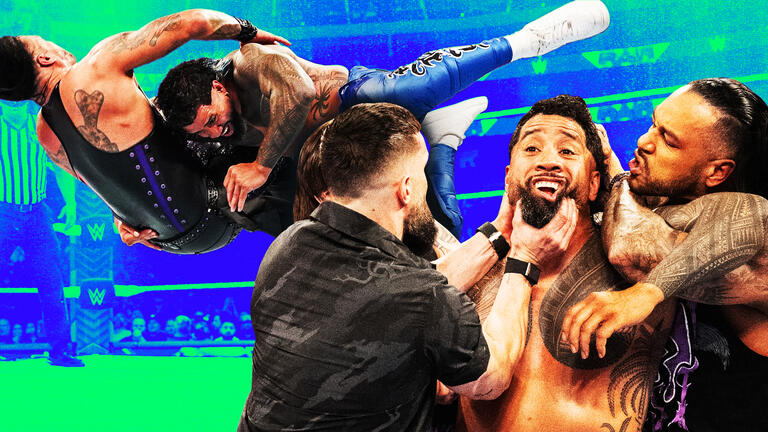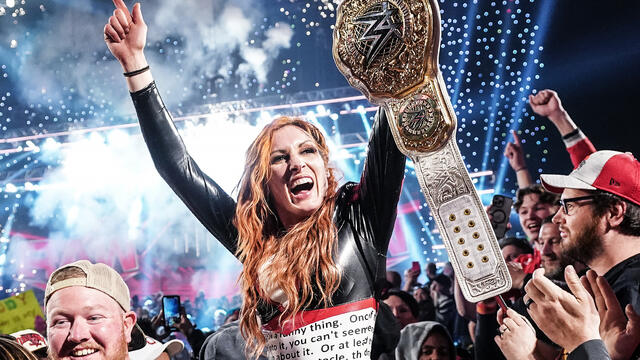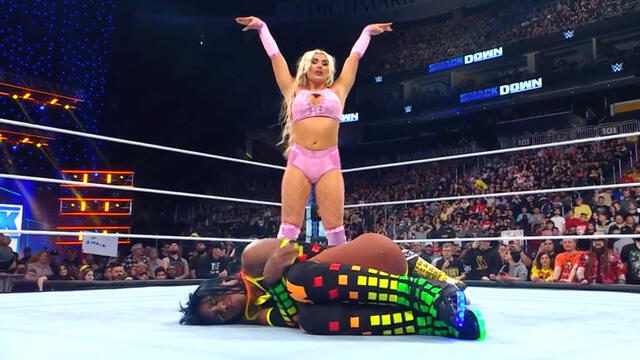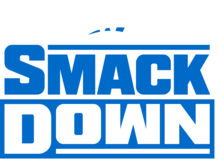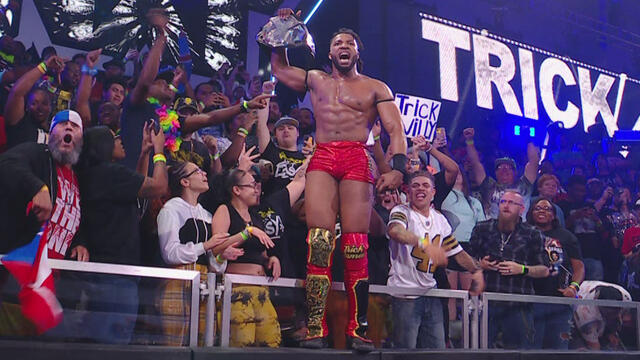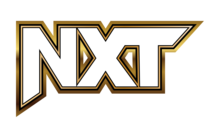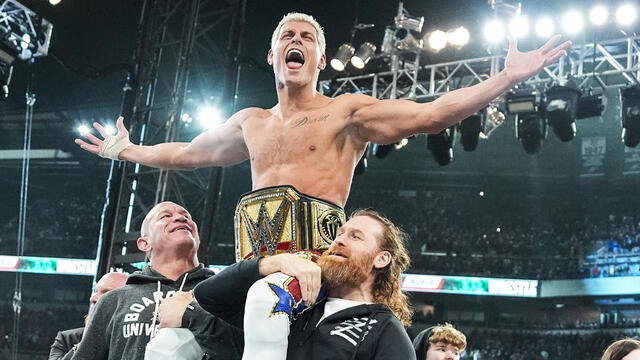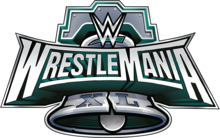The Evolution of a Bingo Hall
On Saturday, June 24, Extreme Championship Wrestling returned to the world’s most famous bingo hall. Just like baseball fans prefer Yankee Stadium, or football fans prefer Lambeau Field, Philadelphia wrestling fans would prefer to watch wrestling in no other place than the ECW Arena. The Arena, as it’s commonly referred to, was the home of Extreme Chamiopnship Wrestling from 1993-2000, and played host to some of the most memorable moments in all of wrestling history. As Little Guido puts it, "It wasn't the nicest or cleanest place in the world, but there sure were a lot of memories.”
The building, which is nestled deep in the heart of one of South Philadelphia’s roughest neighborhoods, was barely a blip on the radar of the Philadelphia wrestling scene in 1993. In fact, Viking Hall, as the building was officially known, was almost literally not on any radar. As Philadelphia wrestling enthusiast Bob Magee remembers, “We were told the building was on the corner of Swanson and Ritner Streets, but we had no idea where that was. We referred to countless road maps and street guides but we still couldn’t find it.” One reason Magee and others couldn’t find the building was because at one point the mysterious street corner simply didn’t exist.
Prior to the building’s occupation by the South Philadelphia mummers club, the building served as a warehouse for trains passing through the Philadelphia area. For the greater part of the 70s and 80s, there were tracks leading to the back of the building where the trains would roll up, drop off freight for storage and then continue on to their next destination. In the late 80s when the mummers took over the building, they paved over those train tracks, creating a new road, and thus a new street corner. That corner, which became Swanson and Ritner, would not only eventually surface on Philadelphia street maps, but the tiny arena located at the previously unknown coordinates would soon become a main destination for the entire wrestling world.
The structure itself was never meant to serve as an “arena”. Accordingly, it didn’t look like an “arena”, but instead a plain anonymous concrete building located almost directly under the overpass of the I-95 Expressway. Bob Magee, who was in attendance at the first ever ECW show at the arena in 1993 recalls his early thoughts on the building. “It looked like an industrial warehouse. It was the most inelegant looking place you could ever imagine. But, at the time it served its purpose as an inexpensive venue to host a wrestling show.”
ECW legend Tommy Dreamer, who wrestled in ECW for the duration of its first existence, remembers his first time driving to the arena. “I remember it took an hour to find the place because I was driving around the neighborhood looking for this big arena. Never in my wildest dreams did I think that over the next seven years of my life, this building would be my home.”
In 1993 when Eastern Championship Wrestling first stepped foot in Viking Hall, the arena was nothing more than a broken down bingo hall. Every Saturday night, the mummers hosted midnight bingo. The games, which were attended by local area residents, were conducted as a way for the mummers to raise money to build floats and buy supplies for their annual parade. If you didn’t know beforehand that the building hosted weekly bingo games, it wouldn’t take long upon walking through the doors to figure it out.
In the early years, the bingo boards remained prominently displayed above the stage area over what is now Section C of the arena. At the time, neither the mummers nor the ECW crew took the initiative to cover them up in time for the shows. In fact, many of the ECW wrestlers and crew could have cared less that bingo was a regular feature of the converted warehouse. ECW icon and fan favorite, the Sandman remembers his feelings, which were shared by a majority of the ECW locker room. “I didn’t care if it was a bingo hall, or a storage facility for some mummers. On the night of the shows there was a wrestling ring in the center of the building, and that’s all I cared about.”
ECW Referee John Finegan recalls, “A lot of people put it down as just a bingo hall, but to us it never was. We’d show up at the arena and the ring was in place, the chairs were set up and we’d be ready to go. The only time we ever noticed that it was a bingo hall was after the shows when we’d bearing tearing the place down and you’d look over and see a line of old ladies waiting for us to finish so they could start their games.”
For the mummers, maintenance and upkeep of the dusty old warehouse was the least of their worries, and it showed. One look at the bathrooms, and one could only wonder how the building passed inspection.
“The bathrooms were disgusting. They were nasty because nobody ever cleaned them. It was a cesspool. You never went in there unless you absolutely had to.” said longtime Arena regular Charlie Adomo.
The Sandman backs up Adomo’s claims. “You wanna talk about extreme? The bathrooms were absolutely brutal. I can’t even describe how disgusting it really was. I mean, those bathrooms would be brand new and before they could be broken in, they’d be broken down.”
Behind the curtain at the arena, the locker rooms weren’t much better.
ECW referee Jim Molineaux remembers the early years. “When we first started, we had one big room where we’d all change. In order to sit down, you’d have to find a chair with four legs to sit on, and those were hard to find. We sat on broken tables, on the floor, or anything we could find to make our own space.”
ECW commentator and longtime wrestler Tazz remembers the modest locker room catering. “Our catering was twizzlers and popcorn. We didn’t care. The ring announcer and the crew would buy stuff like that and bring it in just because they were nice people. We never had nice amenities but we didn’t care.”
In the summer and the winter, the building would push both the spectators and the wrestlers to their physical limits. In its heyday, the building had both non-functioning heating and air conditioning systems, leading to some of the most uncomfortable nights imaginable.
Philadelphia wrestling enthusiast Bob Magee remembers the extreme summers. “The summers were absolutely unbearable. I remember a show in July or August of 1994 where it was so hot in there that somebody brought out a thermometer. The temperature on the thermometer registered at 130 degrees.” Magee remembers a running joke that was more a reality than a tall tale. “People would often joke around that during the summers, in the span of one night you would leave the building five pounds lighter than when you entered because of how much you would sweat in the heat.”
Former ECW World Heavyweight Champion Tazz recalls the lengths the wrestlers would go to in order to stay warm in the winters. “It was freezing during the winters. In our crappy little locker room we had this big heater that you would normally see on a football sideline. It gave off heat but you had to be careful walking by it because it shot out big six foot long flames and if you weren’t careful, you’d burn your leg.”
Referee Jim Molineaux remembers how the weather out outside the arena would be multiplied inside the arena, almost literally. “Whatever it was outside, you experienced it even worse on the inside. The summers were awful, and when it rained or snowed, you would know it because the water would leak through the holes in the ceiling.”
One thing that may have contributed to the extreme discomfort inside the arena may have been the fact that it was often filled to capacity, and then some. Joey Styles remembers just how difficult it was at times to get from place to place inside the arena. “We always exceeded the capacity, sometimes we exceeded it to the point where there were so many people that you couldn’t even walk. The average guy would’ve had a heck of a time moving around that building.”
The fans, who would often gather at the arena as early as Noon for an 8 p.m. bell time, would hang out for hours before the show. Bob Magee remembers, “People would gather around Noon in the parking lot or in lines in front of the building. Rain or shine, they would always be there. They would consume their fair share of beverages and talk about the wrestlers they were going to see later that night.”
Joey Styles remembers the parking lot vividly. “I would pull up to the building around 4 p.m. and it would look similar to an NFL football game. When I would get there, the fans would have already been there for hours. Many were barbequing, and those that were over the age of 21 would be consuming adult beverages. Beer bottles became a staple of that parking lot. I always made sure my spare tire was inflated because you never knew what you might run over.”
Even though the building was not the most desirable thing to look at or even the most comfortable place to be inside of, the rabid ECW fans were able to transform the arena into a favorite of the wrestlers, and a place where many loved to work.
The F.B.I.’s Tony Mamaluke remembers, “It was a bad building. It was dirty and it had terrible facilities, but you loved to be there because you knew you were in a gang fight and you either brought you’re ‘A-game’, or you would get your head torn off.”
Longtime ECW Referee John Finegan sums up the Philadelphia wrestling fan in a few sentences. “The Philadelphia wrestling fan is absolutely insane. Whether it’s wrestling or sports, you have to give 110 percent or you’re gonna hear it. If you didn’t give everything you had, the fans would get on you hard, but you gave your all, they were the most appreciative fans around.”
The voice of ECW, Joey Styles explained how the Philadelphia wrestling fans got the best out of the performers. “The fans in ECW were smart compared to the casual wrestling fan. They expect more from the booking, and more from the performers. You can’t just go in there and throw a chinlock or you will get booed. And that was fine because it made everyone work harder.”
ECW World Heavyweight Champion Rob Van Dam described what he saw when he looked into the crowd. “It was probably the closest thing I can relate to a prison yard. There were a lot of scary people that my mom would definitely not have wanted me to hang around when I was a kid. There was a lot of rough language, and much like Mick Foley said, they were a lot of ‘alcohol drinking, porn addicted, pot smoking, violent, blood thirsty people… and they seem to be the kind of people I prefer to do my thing in front of.”
ECW’s Hardcore Icon, The Sandman understands the rabid Philadelphia fans. “When you go to Japan, or you go overseas, the fans will just sit there and be real polite. They’ll clap when you do well but they don’t go nuts like the Philadelphia fans do. I don’t know what it is that makes them like that. Whether they all feel like underdogs, or feel like their fighting against the system. They’re something about those Philly fans that makes them nuts. They’re rabid, but they’re also intelligent too. They know good wrestling when they see it, and they’ll let you know when they see it. It was heaven performing in that arena.”
Former ECW World Champion Tazz says he owes a lot to the ECW fans. “They were ruthless, they were unforgiving, they were demanding, but they were great. They force you to up the bar and they force you to up your work ethic. They teach you not to be lazy in that ring and when it’s all said and done, they respect you. I feel I owe the Philly fans a lot because without them, I don’t think my career would have evolved into something I could be proud of without them. They were so passionate and I love them for it.”
It’s a well known fact that the ECW fans were at times, difficult to wrestle for. The F.B.I.’s Tony Mamaluke detailed the extreme end of how hard it got at times. “They’ll tear your heart out of it you let them. They will eat you alive. You’ve gotta be on point at all times because if you slip just once, it doesn’t matter if you’re a rookie or you’re RVD, they will get on you. If you’re lucky, they’ll like you, but most likely they won’t. They’re going to boo you, and call your momma some names. They’re going to make fun of you, and your girlfriend, and your family. If you’re lucky, you’ll get out of there without having your windows smashed. I would rather be in front of Congress.”
Away from the arena, however, the fans and the wrestlers shared a unique bond. ECW veteran Mikey Whipwreck remembers the unusual relationship between fan and performer. “They were hard to please, but they were also loyal and thankful. I’ll give you an example. During the show you could get them so mad that they would spit on you. It was pretty cool because later that night you would see them at the bar, and they would buy you a Stoli and cranberry. That was something you wouldn’t see anywhere else.”
Hardcore legend Terry Funk, who was one of the most beloved wrestlers to ever step foot in the arena, sees the ECW wrestlers and fans as one in the same. “They were just a different breed of cat. And we were a different breed of cat. We’re the same breed as those idiots in the crowd. They know we’re idiots and we know they’re idiots. It’s just a bunch of idiots out there being themselves and we loved each other for it.”
For Tommy Dreamer, going to the arena was like going to visit your family. “The ECW Arena was like my home. It was like being with your family. Over the years, people would get older, people would get divorced, people would die, but you would always meet for a Sunday dinner. Going to the arena was like going to meet my family. It was where the Innovator of Violence was born.”
Tazz, who has performed at WrestleMania’s in front of some of the largest crowds in wrestling history, says nothing compared to feeling of being at the ECW Arena. “I’ve been to a lot of nice arenas and I’ve been to a lot of shi**y arenas. I was at WrestleMania XIX in front of close to 100,000 fans and that was an amazing atmosphere. I’ll go on the record right now though. As amazing as the WrestleMania’s are, with all those people and the whole world watching, it still can’t compare to a TV taping at the ECW Arena in the mid 90’s. You just can’t compare it. There was nothing like the atmosphere at the ECW Arena in those days. I haven’t been a part of anything like that since I left.”
Last Saturday, after more than six years away, Extreme Championship Wrestling returned to the corner of Swanson and Ritner. The emotion inside the building flowed freely as many of the hardcore veterans were taking their first steps inside the building since ECW’s demise. Those ECW veterans, along with the new class of Extremists tore the house down in front of a group of fans that bought up all of the Arena’s tickets in less than four minutes.
While the building has changed significantly since 2000, ECW mastermind and former owner Paul Heyman says the feeling he got walking into the building was similar to the one he got a decade ago. “It was an awesome experience walking in because the building has changed so much. But, the atmosphere was still there. Once the building was filled and we looked down from the upper tier, you could just feel the presence. It’s just an experience I would find difficult to convey in words.”
ECW veteran and fan favorite Tommy Dreamer had similar feelings. “The building looks completely different. But no matter how much you change the building on the outside, the atmosphere of the fans on the inside has always been what made the Arena was great, and last Saturday was no different.”
As always, the ECW fans were very vocal. Some expressed excitement in just being there, some loved seeing their old favorites, and some expressed a dislike of the new ECW crew. Heyman says the ECW fans are always slow to respond to the newcomers. “Respect doesn’t come easy at the Arena. Rob Van Dam didn’t have it easy when he first started with ECW. Tommy Dreamer had a tough go of it for the first year and a half he was in ECW. You have to earn your stripes in front of those fans.”
Accordingly, Heyman gave the ECW newcomers a few very valuable bits of advice. “I told them to handle the boos with class and dignity. Keep your head up, do your job to the best of your ability and then some, and when the night is over, leave the ring with your head held high.”
Heyman himself was the target of some hecklers. The former ECW boss understands the fans frustrations, and appreciates their willingness to voice their opinions. “The ECW of 2006 is very different than the first incarnation of ECW. There are going to be a great deal of growing pains. Some people are going to like the new direction of ECW and some aren’t. The beautiful thing in my mind is that they are going to be vocal about it one way or the other. I enjoyed the fans, and I enjoyed their passion and openness. I liked their brutal honesty.”
Tommy Dreamer, who many people most closely associate with ECW says the return to the Arena served as closure for him. I purposely never went back there after we left because I didn’t want to ruin the memories. Making my return, it was great to be back with my family. Now, I have a new memory.”
WWE Shows Latest Results
SmackDown results, April 19, 2024: Tiffany Stratton introduces Bayley and Naomi to Tiffy Time with a sneak attack
Full ResultsNXT Spring Breakin' 2024 Week One results: Trick Williams slays The Mad Dragon to become NXT Champion
Full Results